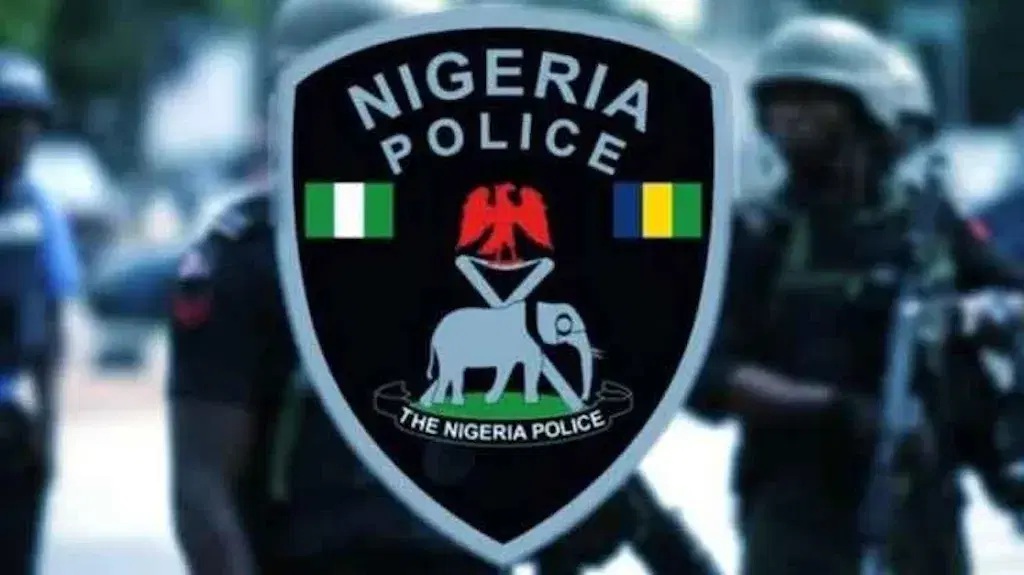Security
BRT bus attack blamed on Okada riders, according to Lagos police

The Lagos State Police Command has announced that suspected motorcyclists, commonly known as Okada riders, whose bikes were seized, are believed to be behind the alleged attack on a BRT bus in the Orile area, on August 14, 2024.
The Command’s spokesperson, Benjamin Hundeyin, revealed this during an interview with the News Agency of Nigeria in Lagos, today.
Hundeyin clarified that the incident was not an armed robbery but a response by the suspected motorcyclists to the seizure of their bikes.
He explained that the Lagos State Taskforce on Environment and Special Offences Enforcement Unit had raided commercial motorcyclists using BRT lanes and other restricted roads.
This action led to the seizure of several motorcycles.
He claimed that some of the motorcyclists, who resisted the police during the raid because of their positions, were arrested.
“Some of these motorcyclists became angry and mobilised themselves to protest.
“The nearest Lagos State Government facility they encountered was the approaching BRT bus.
“They forced the driver to stop and attacked the bus.
“The driver, not feeling confident enough to drive through them, stopped and fled the bus, allowing the riders to vandalise the windows of the BRT.
“While there are claims that some passengers were robbed in the bus, no one has come forward to report this to the police,” he said.
The BRT attack
On August 14, 2024, a Bus Rapid Transit (BRT) bus in Lagos was attacked by hoodlums, leading to a terrifying experience for the passengers on board.
The incident occurred in broad daylight around the Alaba Suru area.
The bus, identified by the registration number 240216, was en route from the Mile 2 Terminal to Lagos Island.
The attack began when the assailants, described as a large group of young men, suddenly started pelting the bus with stones, shattering its windows.
The situation quickly escalated as the hoodlums forced the bus to stop and proceeded to rob the passengers of their belongings, including phones and other valuables.
Several passengers and bus staff were injured during the attack.
The incident, captured in a viral video shared on social media, prompted a response from Lagos State authorities.
The Lagos State Task Force, led by CSP Tayo Akerele, was deployed to enhance security along BRT routes, especially around the area where the attack took place.
This incident highlights ongoing security challenges in Lagos, particularly concerning the safety of public transportation systems like the BRT.
About BRT
The introduction of BRT system in Nigeria, specifically in Lagos, marked a significant milestone in the nation’s public transportation infrastructure.
The BRT system in Lagos, launched in March 2008 under Governor Babatunde Fashola, was the first of its kind in Sub-Saharan Africa.
It was designed to address the chronic traffic congestion and the inefficiency of the existing public transport system, dominated by the chaotic danfo minibuses.
Implementation and features
The Lagos BRT system was implemented through a public-private partnership.
The Lagos Metropolitan Area Transport Authority (LAMATA) provided the infrastructure, while private operators managed the buses and daily operations.
The initial phase covered a 22-kilometer route from Mile 12 to CMS (Central Business District).
It utilized dedicated lanes, ensuring faster and more reliable travel compared to regular road traffic.
The system was designed to function similarly to a light rail service but on the road.
BRT buses run on dedicated lanes, minimizing interference from other vehicles, which helps maintain consistent and rapid transit times.
This setup has cut commuter travel times by up to 40% compared to traditional methods, according to some reports.
Impact and success
The introduction of BRT in Lagos has had a profound impact on public transportation in the city.
The system initially operated with 220 buses and quickly became a popular mode of transport, especially among the lower-income population.
Daily ridership quickly exceeded projections, with over 200,000 passengers using the service daily in its early years.
The system has transported over 400 million passengers overtime, saving time in traffic and enhancing overall mobility and economic efficiency.
The success of the Lagos BRT system has led to calls for its expansion to other city corridors.
Plans are underway to extend BRT services to new routes, including from Mile 12 to Ikorodu.
Challenges
Despite its success, the Lagos BRT system has faced challenges.
These include issues with maintaining the dedicated lanes, as other vehicles sometimes encroach on them, leading to delays.
Concerns include bus maintenance, operation, and the need for ongoing infrastructure investment to meet growing demand.
The BRT system in Lagos represents a significant advancement in Nigeria’s public transportation sector.
It has offered reliable, efficient, and affordable transport for millions of Lagosians, setting a precedent for similar initiatives nationwide.
However, its success relies on overcoming operational challenges and expanding the system to meet the growing needs of the city’s population.
The Lagos BRT’s comprehensive approach has set a model for urban transit in rapidly growing African cities.
News
Paul Chukwuma joins peaceful march against Udogachi, SASA operatives in Anambra

The candidate of the Young Progressive Party (YPP) in the November Governorship election in Anambra State, Sir Paul Chukwuma, on Friday joined a peaceful march against the intimidation and abuse meted out to Ndi Anambra by operatives of Udogachi and SASA through misuse of governmental authority.
Udogachi, a security outfit created by the Soludo-led Government and the SASA, an anti-touting agency otherwise known as Ndi Akodo, which is notorious for using pestles on citizens, have come under intense scrutiny owing to the numerous clips of their abuses against the people.
In the past week, operatives of Udogachi have come under serious criticism for manhandling a young girl who is a serving youth corps member in Oba, Idemili South LGA of Anambra State.
During the peaceful march against the brutality of Udogachi and SASA, which was organized by Make Anambra Great Again, the YPP Governorship candidate regretted that the governor of Anambra State, Professor Charles Chukwuma Soludo, would allow agencies of the State established to serve the people to become instruments of operation against the same people.
“Anambra is not in a good place today. It affects all of us. We are determined to fix our state,” Paul Chukwuma said while addressing a large crowd at Eke Awka market.
The peaceful march, which commenced from Aroma Junction in Awka, terminated at the Anambra State Police Headquarters in Amawbia, where the group was received by the Deputy Commissioner of Police in charge of Operations, DCP Ibrahim Ezekiel.
At the Anambra State Police Command’s office, Sir Paul Chukwuma addressed the DCP and listed some of the reasons for the peaceful march, which include the abuse meted out to innocent citizens by Udogachi and SASA.
He also called on the police to rise up to their responsibilities, while assuring them of support from Ndi Anambra.
“The responsibility placed on the government in terms of protection of lives and properties is well spelt out in the constitution. In Anambra today, we are experiencing what is a negation of the position of the law. We know the agencies of government that are saddled with the responsibility of ensuring law and order in our state. Anambra State is still part of Nigeria as a sub-national entity. We are experiencing something that has never happened in the history of Anambra State…with what is happening today, we are beginning to wonder if the Nigerian Police Force has abdicated their responsibility and duty to Ndi Anambra. Today, we have experienced a litany of what we call an aberration to the protocol of such organization and agency (Udogachi and SASA). A lot of heinous crimes are being perpetrated in Anambra State by the so-called security outfit Udogachi. We don’t have anything against establishing such an outfit. But we are of the opinion that such outfits, when established, must abide by the rule of law,” Chukwuma said.
Reacting, DCP Ibrahim Ezekiel, who stood in for the Commissioner of Police, assured Paul Chukwuma and the group that the issues raised would be addressed by working with all stakeholders.
Speaking on behalf of the group, Nkem Mbonu, the group’s coordinator, said that the group had articulated three clear demands from their engagements with the people of Anambra State.
The demands include: an investigation into cases of missing persons in Anambra State. Secondly, an investigation into the alleged secret cells of Udogachi in Awka and Onitsha. Finally, the assumption of full security of the state by the police, as well as the disbandment of SASA.
The walk, which covered about seven kilometers, was well received by thousands of Anambra residents, who expressed their disapproval of the modus operandi of Udogachi and SASA operatives.
Africa
Why Every Nigerian Should Learn Combat Skills — CDS

The Chief of Defence Staff (CDS), General Christopher Musa, has urged all Nigerians to acquire combat skills such as Karate, Taekwondo, and Judo to protect themselves in the face of increasing danger.
Speaking on Channels Television’s Politics Today programme on Thursday, August 21, General Musa likened learning martial arts to other essential survival skills, including driving and swimming.
“That one should be taken as learning driving, learning how to swim.
Whether we have war or not, it is a survival instinct,” he said.
He added that in Europe, swimming and basic security education are compulsory because citizens must understand and practice personal safety.
The defence chief emphasised that the National Youth Service Corps (NYSC) should incorporate unarmed combat training into its programme to prepare graduates for real-world threats.
He explained, “That’s what the NYSC is supposed to do, but the NYSC has been watered down to three weeks. Self-defence is very important.
Unarmed combat, swimming, driving these are critical aspects of human survival. We should never take them for granted because they prepare us for the future.”
General Musa further encouraged Nigerians to remain situationally aware of their environment, alerting authorities to any suspicious activities or individuals.
He said, “The world we are in now is dangerous. We have individuals who don’t mean people well. They kill for whatever reason.”
Highlighting evolving threats, General Musa disclosed that terrorists increasingly use gold to finance their operations.
He noted that complex international networks make it difficult to immediately expose or prosecute these financiers. “Gold is the main source.
They circulate it through various channels, including foreign links, which complicates intervention,” he explained.
General Musa acknowledged that bad roads and challenging terrains hinder rapid military response to attacks.
He said, “Many Nigerians expect immediate intervention from the Armed Forces without understanding the logistical challenges. By the time information reaches us, terrorists have already struck and vanished because they move more quickly in these regions.”
He added that improvised explosive devices (IEDs) in the North-East further slow troop movement.
Regarding the Southeast, General Musa noted that the arrest of pro-Biafran agitator Simon Ekpa in Finland in November 2024 has improved security in the region.
He said, “Troops are actively pursuing Ekpa’s lieutenants in Imo, Enugu, Anambra, Ebonyi, and Abia states. We will continue operations until all threats are neutralised.”
The CDS also praised the synergy among the Nigerian Army, Air Force, and Navy, which led to the arrest of Ansaru terrorist leaders, describing it as a major success in the fight against terrorism.
General Musa concluded by announcing an African Chiefs of Defence Staff conference to foster continental collaboration and enhance regional security efforts.
News
Bandits abduct naval officer, family in Kaduna

Residents of Kachia Local Government Area in Kaduna State are gripped with fear following the abduction of a naval officer and his family by armed bandits in the wee hours of Wednesday, August 20, 2025.
The attack, which occurred around 2am, saw the gunmen storm Unguwan Mission, targeting Seaman Olatunji Enoch, a 40-year-old naval officer attached to the Nigerian Navy Secondary Armament Training (NNSAT) in Kachia.
The attackers reportedly abducted Seaman Enoch alongside his 25-year-old wife, Margaret Olatunji, and their 13-year-old daughter, Hellen Bitrus.
Security analyst Zagazola Makama confirmed the incident, emphasizing that it highlights the escalating insecurity in Kaduna, where bandits have increasingly targeted both civilians and security personnel.
Security agencies have since launched a manhunt for the perpetrators, deploying cordon-and-search operations in nearby bushes and suspected hideouts.
Authorities have assured the public that efforts are underway to ensure the victims are rescued unharmed.
News
Herdsmen slaughter mother, son, 2 others in fresh Benue attack

A devastating attack shook Agatu Local Government Area of Benue State on Wednesday as suspected armed herdsmen launched a violent assault on two farming communities, Egwuma and Ogbai.
The attack, which occurred around midday, claimed the lives of four farmers, including a woman and her young son, leaving the community in shock and mourning.
Additionally, two residents remain missing, with search efforts ongoing to locate them.
Eyewitnesses recounted the horrifying events, describing how the attackers stormed the farmlands in large numbers, firing indiscriminately at farmers going about their daily work.
“They came in large numbers and started shooting at innocent people in their farms,” said a resident identified as Oglewu.
Another local source revealed that families have fled to nearby villages in search of safety, leaving both communities tense and deserted.
“As I speak, two farmers are still missing, and youths are searching for their bodies for burial,” the source added.
The Chairman of Agatu LGA, Melvin James, condemned the attack, calling it “senseless and barbaric.”
He expressed disbelief at the unprovoked nature of the killings, saying: “How could people attack and kill a mother and her son who were working on their farm? This is an unprovoked attack on our people.”
James further explained that the incident occurred while security operatives were patrolling other parts of the council, highlighting the challenges posed by poor road infrastructure that often delays emergency responses.
Despite the efforts of security operatives to maintain peace in the area, James acknowledged that logistical challenges, such as bad roads, remain a significant obstacle.
“The security operatives in Agatu have been doing their best, but the problem in my council is the bad roads”, he noted.
The attack has reignited fears among residents of Agatu, a region that has faced repeated waves of violence linked to herdsmen-farmer clashes.
It underscores the urgent need for strengthened security measures and improved infrastructure to protect vulnerable communities in Benue State.
News
Security forces dislodge dreaded IPOB commanders’ from hideouts

Combined security operatives have successfully dismantled the hideouts of “notorious commanders” of the outlawed Indigenous People of Biafra (IPOB) and its militant wing, the Eastern Security Network (ESN), in Imo State.
The operation, carried out on Monday in Ubaa, Umuaka—a volatile community in Njaba Local Government Area—was described as a significant victory by security forces.
According to Henry Okoye, Deputy Superintendent of Police and spokesman for the Imo State Police Command, the operation was a collaborative effort involving police officers and other unnamed security agencies.
Acting on a tip-off and confessional statements from two detained suspects, Uchenna Opara and Ozioma Ihedoro, security operatives moved in on the targeted location.
Upon arrival, the armed militants opened fire but were overwhelmed by the superior firepower of the operatives, forcing them to flee into nearby bushes, many sustaining gunshot wounds in the process.
The raid yielded a substantial cache of weapons and equipment, including two Biafra flags, one Point of Sale (POS) machine, an AK-47 rifle with three magazines, 40 rounds of live AK-47 ammunition, 60 rounds of live General Purpose Machine Gun (GPMG) ammunition, two pump-action guns, and 582 live cartridges.
Investigations are ongoing to track down the fleeing suspects, according to the police.
The Commissioner of Police in Imo State, Aboki Danjuma, has assured residents of their safety and urged them to remain vigilant.
He emphasized the importance of promptly reporting suspicious individuals, particularly those with gunshot injuries, to the authorities.
Danjuma also encouraged the use of designated emergency phone lines for quick responses to security concerns.
IPOB, which advocates for the secession of South-east and parts of South-south Nigeria, has been linked to several violent attacks in the region.
However, the group has consistently denied involvement in such incidents, maintaining that it is committed to peaceful advocacy.
-

 Celebrity/Entertainment2 days ago
Celebrity/Entertainment2 days agoHow Nigerian TikToker Geh Geh Made ₦45 Million in One Night
-

 Featured5 days ago
Featured5 days agoYour Attacks on Peter Obi Are Petty, Stop It! Chekwas Rebukes Soludo
-

 News5 days ago
News5 days agoTension in Anambra community as senior police officer shoots kinsman dead
Colleagues, others try cover-up; victim's family fights back
-

 News6 days ago
News6 days agoNigerian visa applicants must provide 5-yr social media history — US embassy
-

 News4 days ago
News4 days agoTerrorist Organisation: APC, PDP Members in US, UK, France Risk Deportation
-

 Analysis7 days ago
Analysis7 days agoSystemic Sabotage: How APC, INEC Colluded To Undermine Amamgbo’s Senatorial Bid
By Arthur Ezechukwu
-

 Celebrity/Entertainment6 days ago
Celebrity/Entertainment6 days agoWhy single mothers can’t raise boys into proper men — Jim Iyke
-

 News3 days ago
News3 days agoVandal electrocuted while vandalizing Aba power infrastructure
-

 News2 days ago
News2 days agoPeter Obi’s Son Breaks Silence Over His Viral Photos Nigerians Are Talking About
-

 News3 days ago
News3 days ago15% of Nigerian girls aged 15–19 are mothers or pregnant — FG












